To stay relevant in the market business owners must put strategies in place to compete with the oversaturated online marketing landscape. Here are some actionable steps to take to stay on top of digital advertising evolution.
Emphasis on Personalization
Personalized advertising continues to dominate. Consumers expect tailored experiences that resonate with their individual preferences and needs.
Actionable Strategies

- Leverage Customer Data
Utilize CRM systems to gather insights about customer behavior and preferences. - Dynamic Content
Implement dynamic ads that change based on user data, such as location and previous interactions. - Segmentation
Create targeted campaigns for specific audience segments to enhance relevance and engagement.
Personalized advertising not only improves engagement but also drives higher conversion rates.
Rise of Video Content
Video content remains a powerful medium for engagement. With platforms prioritizing video, brands must incorporate this format into their advertising strategies.
Implementation Tips
- Short-Form Videos
Create concise, attention-grabbing videos suitable for platforms like TikTok and Instagram Reels. - Live Streaming
Use live video to showcase products, host Q&A sessions, or provide behind-the-scenes content. - Storytelling
Focus on narrative-driven content that connects emotionally with viewers.
Investing in video content can significantly enhance brand visibility and consumer connection.
Increased Focus on Privacy
As privacy regulations tighten, businesses must navigate new challenges in digital advertising. Consumers are increasingly concerned about data privacy and security.
Compliance Steps
- Transparency
Clearly communicate data collection practices to users, ensuring they understand how their information is used. - Opt-In Strategies
Develop strategies that encourage users to opt-in to data sharing while offering incentives. - Privacy-Centric Tools
Utilize tools and platforms that prioritize user privacy and comply with regulations like GDPR and CCPA.
Maintaining consumer trust through transparent practices is essential for successful advertising.
Integration of AI and Automation
Artificial intelligence (AI) and automation are revolutionizing content creation and digital advertising by improving efficiency and targeting precision.
How to Implement
- AI-Powered Analytics
Use AI tools to analyze consumer behavior and predict trends, enabling more effective targeting. - Automated Campaigns
Leverage automated bidding strategies in platforms like Google Ads to optimize ad spend in real-time. - Chatbots
Implement AI-driven chatbots on websites to enhance customer engagement and support.
Integrating AI can streamline processes and improve overall campaign effectiveness.
Multi-Channel Marketing Strategies

A successful digital advertising requires a cohesive multi-channel strategy that reaches consumers across various platforms.
Strategic Steps
- Consistent Branding
Ensure your branding is consistent across all channels, including social media, email, and paid ads. - Cross-Platform Campaigns
Develop campaigns that can seamlessly transition between channels, enhancing user experience. - Performance Tracking
Use analytics to monitor performance across all channels and adjust strategies accordingly.
A multi-channel approach allows for greater reach and engagement with diverse audience segments.
Sustainable Advertising Practices
Consumers are becoming increasingly environmentally conscious, pushing brands to adopt sustainable advertising practices.
Implementation Ideas
- Eco-Friendly Campaigns
Promote sustainability initiatives within your advertising to resonate with environmentally aware consumers. - Digital Over Print
Favor digital advertising methods over traditional print to reduce environmental impact. - Sustainable Partnerships
Collaborate with brands that share a commitment to sustainability, enhancing your brand's reputation.
Sustainable advertising not only appeals to consumers but also fosters a positive brand image.
Data-Driven Decision Making
Data remains a cornerstone of effective digital advertising. Businesses that leverage data can make informed decisions that enhance campaign performance.
Best Practices
- KPIs Monitoring
Regularly track key performance indicators (KPIs) such as conversion rates, ROI, and customer engagement. - A/B Testing
Conduct A/B tests on ads to identify the most effective messaging and visuals. - Feedback Loops
Use customer feedback to refine advertising strategies and improve future campaigns.
Emphasizing data-driven decision-making can lead to more effective and successful advertising initiatives.
As digital advertising continues to evolve, businesses must stay informed about emerging trends and technologies. By focusing on personalization, video content, privacy, AI integration, multi-channel strategies, sustainability, and data-driven decisions, brands can effectively navigate the changing landscape and achieve their marketing goals.
If you are ready to elevate your digital advertising strategy, Partner with Vix Media Group for expert guidance tailored to your business needs.






















.png)



.svg)




